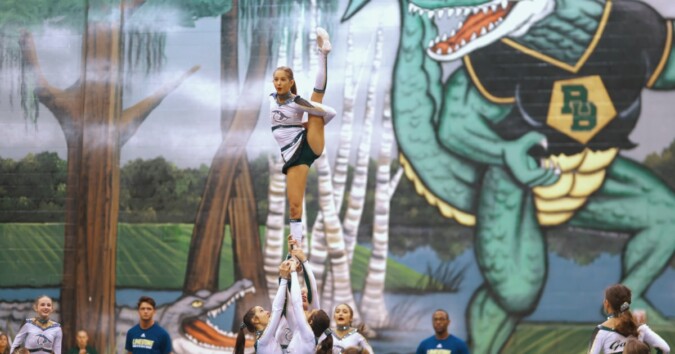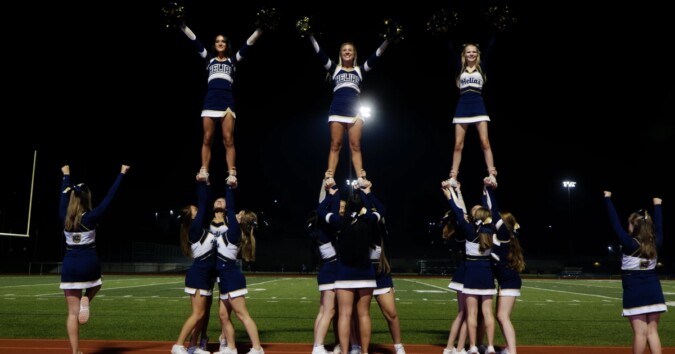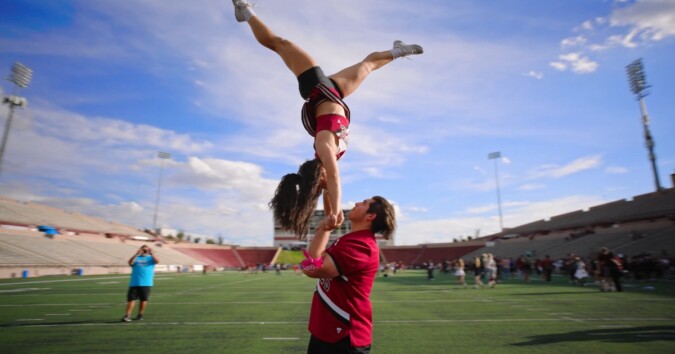Cheerleading has made a significant transition from being an ancillary sport to becoming a central theme in popular culture, captivating viewers through its depiction in movies, television shows, and more. This energetic and spirited activity is showcased in media narratives ranging from motivational stories of unity and victory to intense sagas of rivalry and self-discovery.
Such representations have elevated cheerleading beyond its athletic essence, casting it as a symbol of various societal values such as belonging, determination, and artistic expression. As cheerleading’s portrayal evolves within the cultural landscape, it offers insights into shifting perspectives on athleticism, gender roles, and the art of performance.
This opening discussion explores the nuanced depiction of cheerleading across entertainment platforms and its consequent influence on societal norms and the development of the sport itself.
How Did Cheerleading Transform the Cinema?
In the realm of film, cheerleading has evolved from mere sideline entertainment to a focal point of storytelling, reflecting its depth and allure. Initially cast in conventional roles that focused more on appearance than skill, cheerleading’s cinematic image underwent a significant shift with movies like “Bring It On“.
These films shone a light on the demanding practice, spirited competition, and strong team bonds that define the sport. They delved into themes of unity, rivalry, and striving for greatness, providing viewers with insight into the hard work cheerleaders put in to achieve excellence.
This evolution in portrayal not only captivated audiences but also fostered a newfound respect for cheerleading, dismantling clichés and presenting cheerleaders as well-rounded athletes.
Cinema has been instrumental in redefining cheerleading’s image, altering how it’s perceived by the public and motivating future generations of participants. Through its portrayal in movies, cheerleading has been recognized for its narrative potential, encapsulating stories of aspiration, self-discovery, and belonging.
How Is the Sport Represented in Other Media?
Cheerleading’s presence is felt across multiple media platforms, from television and music to literature, further enhancing its cultural significance. Shows like “Glee” and “Cheer” offer a detailed portrayal of cheerleading, blending elements of humor, drama, and the real adversities cheerleaders navigate.
These portrayals contribute significantly to depicting the sport’s rigor and the compelling personal narratives within the cheer community. One thing that is noticeable in these films are the custom cheer uniform models, and if you visit this website, you can explore different uniforms and see which one would look the best on you.
In the music industry, cheerleading themes have energized music videos and performances, exemplified by Gwen Stefani‘s hit “Hollaback Girl“, which employs cheerleading motifs for dynamic and memorable visuals.
The literary world too explores cheerleading through novels and autobiographies, presenting in-depth perspectives on the lives and transformative experiences of cheer athletes. These diverse media portrayals have been instrumental in redefining cheerleading’s image, presenting it as a discipline marked by athleticism, dedication, and complex personal growth.
As cheerleading permeates various entertainment channels, it continues to engage and inspire audiences by highlighting its broad appeal and the enduring themes of unity, determination, and spirited passion.
How Did the Media Affect the Way We See Competitive Cheerleading?

The spotlight on competitive cheerleading through various media channels has significantly influenced the public’s view of cheerleading, highlighting its legitimacy as an athletic endeavor. Through documentaries and reality series such as Netflix’s “Cheer,” the intricacies and challenges of competitive cheerleading are brought to the forefront.
These portrayals underscore the physicality, precision, and team synergy essential for success in competitive cheer, challenging outdated views of cheerleading as a mere support activity. Nowadays, many forms of art and different media help people learn more about the sport, and that changes the way we perceive it.
Thanks to the shows, documentaries, movies, and even music, we are able to see a different side of cheerleading that we have not seen before. By showcasing the intense preparation, choreographed performances, and athletic skill required, such media narratives have shifted the perception of cheerleading, garnering respect and admiration for the discipline it demands.
The visibility of competitive cheerleading in mainstream media has not only elevated the sport’s prestige but also motivated individuals to recognize and engage with cheerleading as a serious athletic pursuit.
As portrayals of competitive cheerleading continue to captivate viewers, they affirm the sport’s value and intricacy, drawing a wider audience and deepening appreciation for the multifaceted nature of cheerleading as both an art and a sport.
This Form of Art Also Helps Modern Cheerleaders Get Noticed

The depiction of cheerleading in various forms of media has contributed to the creation of an interconnected, worldwide cheerleading fellowship. With the advent of online streaming and the widespread use of social networks, international cheerleading contests and worldwide events have become increasingly accessible to a global audience.
This has not only expanded the reach of cheerleading but also encouraged cultural interchange among its community. Cheerleaders across the globe are inspired by one another, blending a variety of styles and methods into their performances.
The depiction of cheerleading on a global scale has fostered a spirit of inclusiveness and solidarity, illustrating the sport’s capacity to bridge cultural divides. This international camaraderie, underpinned by media visibility and digital connectivity, enhances collaboration and shared admiration among cheerleaders from different backgrounds.
As cheerleading continues to be featured across media platforms, it emerges as a worldwide celebration, highlighting diversity and the shared values of teamwork, physical prowess, and enthusiastic competition.
The depiction of cheerleading within pop culture, from cinematic adventures to television narratives, has played a pivotal role in elevating the sport to a celebrated phenomenon, rich in both athletic rigor and artistic expression.
These cultural portrayals have transformed how cheerleading is perceived, spotlighting its spirit of teamwork, commitment, and vibrant community life. Through stories that unfold the lives and aspirations of cheerleaders, popular media has ignited a global resonance, knitting together an international tapestry of enthusiasts.
This cultural journey of cheerleading mirrors shifts in societal values towards embracing diversity, empowerment, and athletic excellence. As cheerleading continues to enchant a worldwide audience, its legacy in popular culture stands as a testament to the sport’s capacity to motivate, connect, and dazzle across generations.

